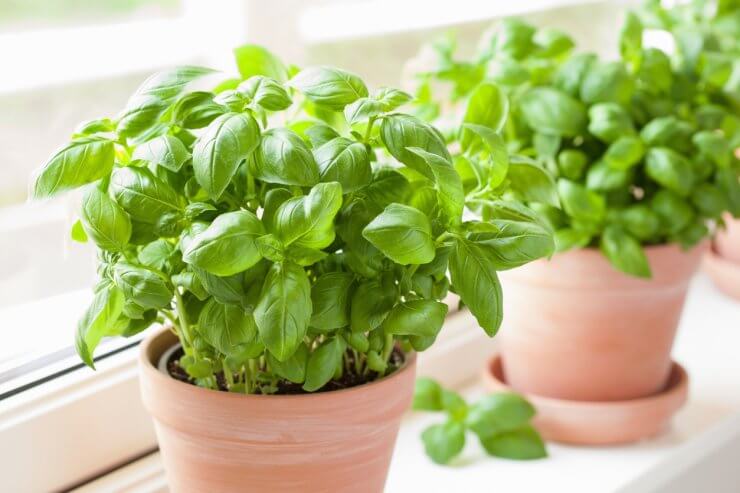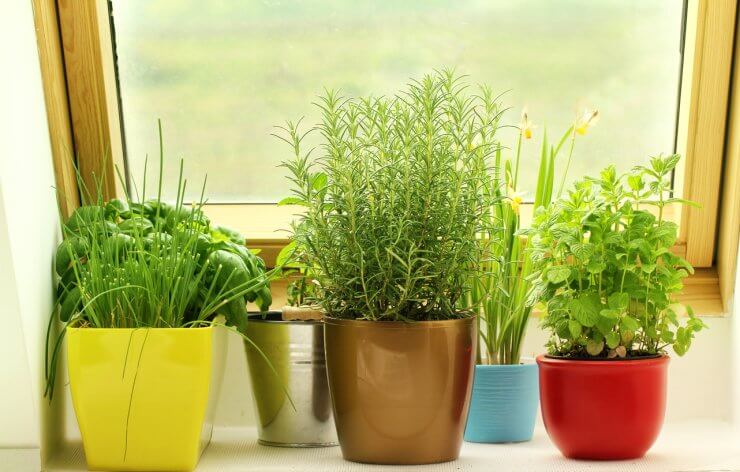
My most eventful experience with indoor garden pests happened a few winters ago. One of my neighbors handed over a gorgeous basil plant that had spent the summer outside in the sunshine. She didn’t have room for it in her home, so I was the lucky recipient.
Thinking how awesome it would be to have fresh basil all winter long, I found a warm, sunny spot in the kitchen next to a rosemary plant and a few houseplants. That’s pretty much where the fairy tale ends, though.
Within a week, the basil, rosemary, and houseplants were infested with fungus gnats that had somehow remained hidden while the basil was outdoors. And they were starting to spread! That was the end of the basil and rosemary. I did manage to save the other plants, but not without some serious effort.
Those aren’t the only indoor garden pests, either. So aside from never having an indoor garden, what can you do?
Discover 7 top tips for growing, harvesting, and enjoying tomatoes from your home garden—when you access the FREE guide The Best Way to Grow Tomatoes, right now!

Don’t let indoor garden pests ruin your plants this winter
What kind of indoor garden pests are we talking about here? There are the aforementioned fungus gnats, as well as spider mites, whiteflies, scale, and pretty much anything you may possibly bring in from outdoors.
In fact, most indoor garden pests start their lives as outdoor garden pests. We inadvertently bring them inside when we move our plants indoors for the winter. Even plants that live exclusively indoors can have pests living in the soil that ultimately end up in our homes.
Once they’re established, many of them can be exceedingly difficult to get rid of. I’ll mention a few treatments later, but prevention is always the best medicine. Here are some ways you can prevent these indoor garden pests from getting a foothold this winter.
Keep your plants healthy. Healthy plants, along with the healthy soil they thrive in, are less susceptible to pests. For example, soil that is too wet and doesn’t drain well is a breeding ground for root rot and fungus gnats.
Inspect your plants before you bring them in. Whether it’s your own herbs that you’re bringing in for the winter or that beautiful Monstera you buy, inspect them very carefully for any signs of pest problems.
Start your indoor garden from seed. If your indoor plants start in the controlled environment of your home, and they never go outdoors, there’s a pretty good chance you can keep them free of pests. I’ll be the first to admit that I love to let my plants get some fresh air and sunshine and even rain when it’s warm out, so my experience with this particular tip is limited. But it kinda makes sense, right?
Use clean pots. Even if your plants are free of indoor garden pests, it’s reasonable to think that some of these pests could hide in the tiny cracks or divets in a dirty pot.
Keep the air moving. One of the reasons your outdoor balcony plants often do so well is that there is a lot of air movement. That makes it more difficult for pests or fungus to gain a foothold. Especially in winter, with our windows closed, there isn’t very much air movement in most of our homes. A small fan may be just what your plants need to replicate that outdoor breeze.
Spread your plants out. There are two reasons for this. To begin with, there’s more room for air circulation when your plants have some space. And if you do end up with any indoor garden pests on one plant, they won’t have such easy access to other plants if they aren’t bunched up. I should mention that I realize some of us may have a slight problem with this given that we have about a million plants in our home, but we do our best.
Buy those carnivorous plants you’ve always wanted. Pitcher plants, venus flytraps, sundews – whatever your favorite insect-eating vegetation is, this is your chance to bring the Little Shop of Horrors right into your home. In truth, these plants can only eat a small number of insects each month, so this may not be the perfect solution, but it is a cool biology experience.
Treating your plants if they get infested
If you’ve done all you can to prevent indoor garden pests, or even if you haven’t, you still may find that they show up. You have a few options at this point, but whatever you choose, jump on it right away. The longer you wait to deal with this problem, the worse it will get.
Spray your plants with Neem oil. Neem oil has long been a favorite of gardeners for dealing with pests of all types.
Remove an infested plant. If you notice that a plant has a pest problem that hasn’t yet spread, remove it immediately. You can take it to your garage or a shed if you want to try to deal with the pest problem there, or you can discard the plant. Either way, this is one way to help prevent a larger problem.
Cover the soil. Some pests, like fungus gnats, thrive in damp soil and will reproduce below the soil surface. One solution for these insects is to let the soil dry out completely and cover it with a layer of sand. This keeps them from getting the moisture and nutrients they need while effectively burying them too deeply to survive.
Bring in the army. That would be the ladybug army, by the way. Ladybugs are well known as pest control experts. The problem, of course, is then you have hundreds of ladybugs in your home. Or is that a problem? Your choice. If you have an enclosed porch that would keep your plants warm enough, you could move everything there and bring in the ladybug army, but again, use your best judgment here.
OH! One last thing. Some of you may have other indoor garden pests, such as cats. My advice on that? Good luck!
How do you deal with pests on your indoor plants?
Discover 7 top tips for growing, harvesting, and enjoying tomatoes from your home garden—when you access the FREE guide The Best Way to Grow Tomatoes, right now!




